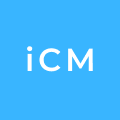Rethinking Your ERP Strategy to Gain a Competitive Advantage
Investing in a good ERP system is a big responsibility for any company that needs a flexible system paired with rapid responsiveness looking to increase their business opportunities. Adhering to a few simple and practical guidelines can make this process a simple task, allowing executives to more effectively manage the risks of modernizing their ERP solutions to gain a competitive edge in the market. For more information see the full article here.
Thinking of restructuring your ERP strategy to boost your bottom line? Get started with XcelPros!
























